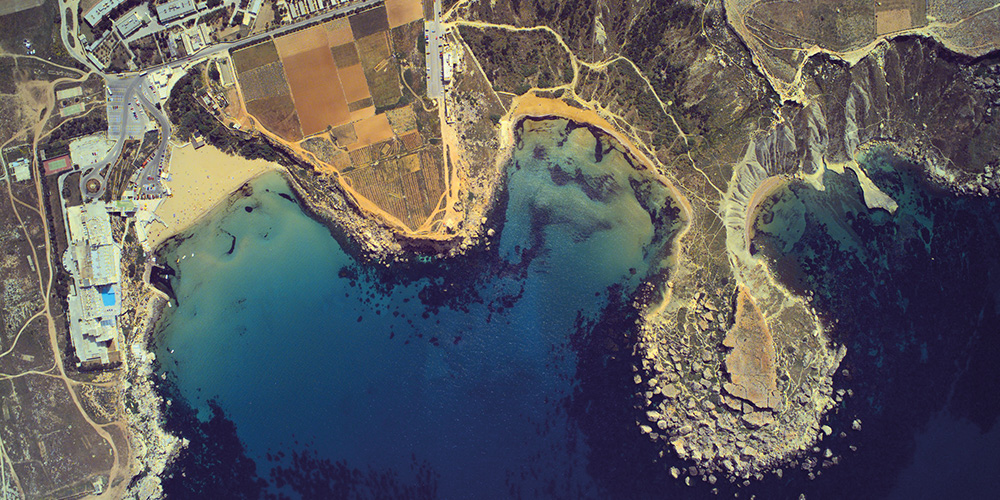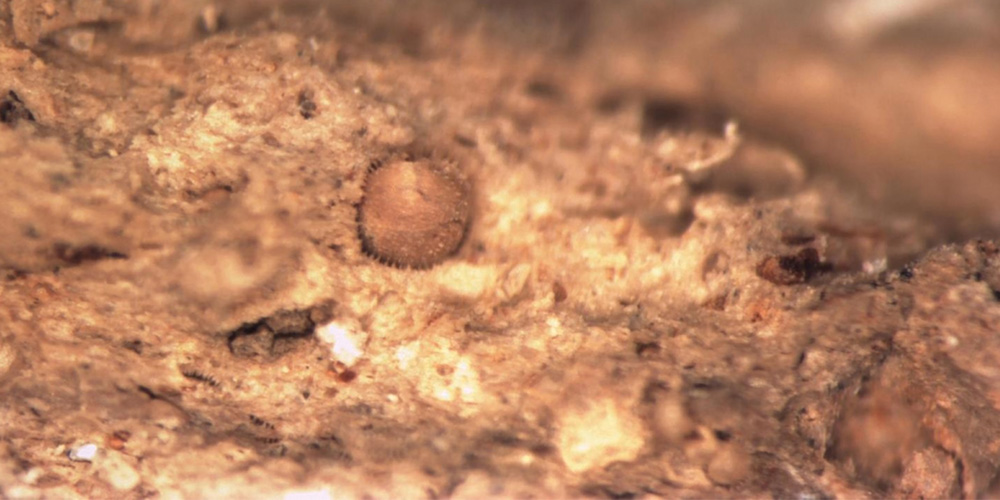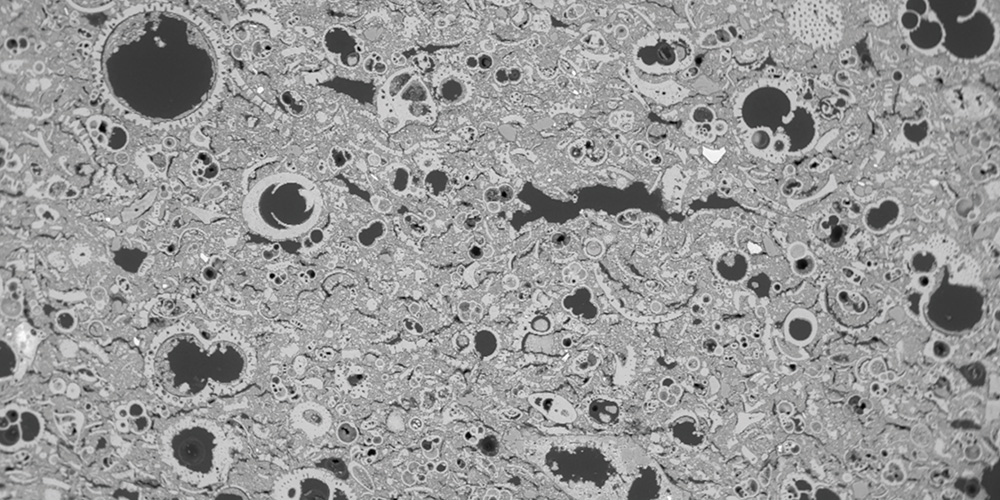In 1947, excavation works exposed a new type of pottery in a burial site outside Żebbuġ, Malta. Like many other antique pots, the find contains foraminifers – single-celled organisms living in shells. Dr Ing. John Charles Betts and Dr Catriona Brogan write about how these creatures can unlock the secrets of the Neolithic era.
Six million years ago a tiny single-celled creature, from a family called Globigerina, floated, grew, and died at sea under the Mediterranean sun. The tiny shell of this hole-bearer – the Latin term ‘foraminifer’ refers to the holed shell – sank to the sea bed. With time, and in the company of countless others, it became an island. Millions of years later people sailed over the same sea to populate the island. People and foraminifers met in various ways, and we, humans, are excited to be this remarkable creature’s new contact point.

In 1947, a Royal Navy installation at Ta’ Trapna was busy with Dockyard workers digging trenches. A civil engineer stopped works upon finding five rock-cut tombs containing human remains and pottery. Decades later, in 2018, the edge of one pot sherd from this excavation finds itself under the lenses of a microscope at the Department of Classics and Archaeology (University of Malta [UM]): the fossilised foraminifer saw daylight again, transformed into an important part of the archaeological record.
This one little fossil is one of many clues which we are looking at, hoping to find the source of clay used by Neolithic potters. The project brings together an interdisciplinary team of archaeologists, engineers, and natural scientists to explore the fabric of pottery sherds to understand the technique, skills, and capabilities of potters in the early Neolithic period on the Maltese Islands.
The single-celled creature’s journey continued in the store rooms of Malta’s National Museum of Archaeology. Dr Catriona Brogan, the project’s principal researcher, sorted through hundreds of sherds to identify a sample set of 381. The sherds are from the earlier part of the Neolithic period in Malta, produced by pre-Temple period societies before the advent of the better-known Temple builders, famous for building Ħaġar Qim, Mnajdra, and many other structures.

The team documented the pottery sherds. We ground an edge flat to be able to see it under the microscope. Powerful lenses showed us a landscape of minerals and fossils (including thousands of foraminifers and the remains of other small organisms) embedded in dull or vivid, red or grey pottery. Could the foraminifer’s identity provide a clue to the clay’s origin?
The shells of these creatures are not easy to identify. They have been fired, cut, and ground to be able to see under a microscope. Still, we are finding indications that the species in the Neolithic pottery are found locally. These could have been made in Malta, rather than imported.
Foraminifers are only a small part of the story. Small mineral particles are also embedded in the pot sherds. Some of these would have been picked up along with the clay. Malta has many scenic coastal or inland clay slopes, such as il-Qarraba, near Ġnejna Bay. If you look closely at the grey clay, you’d see debris from crumbling Greensand layers above the clay, plant seeds, wind-blown sand, and particles. When collecting clay, the potter would have picked all of these up. In addition, temper would be added to make the clay object survive the manufacturing, drying, and firing processes. This would need small particles of stone, organic material, or crushed broken pottery or shells. Organic material would mostly burn away, but the minerals would remain.

These microscopic traces reveal fascinating secrets about Malta’s former inhabitants. A whole team of people are needed to unravel the mystery. To analyse these samples, we collaborate with an Italian researcher who specialises in polarised light microscopy. Locally, Heritage Malta’s Diagnostics Laboratory handles scanning electron microscopy. The Department of Metallurgy and Materials Engineering (UM) provides X-Ray Diffraction techniques. The team identifies the material’s nature and narrows down their origin. Did the potter collect temper in Sicily or in Malta? Pottery found in Malta is similar to Sicilian examples in style and colour. For example, the Sicilian Stentinello ware is similar to the Maltese Għar Dalam pottery. But if the pots used Sicilian material, literature tells us that part of it would be volcanic. Such information tells us interesting stories about the way people and skills moved around the Mediterranean.
To show what we have discovered we are opening a temporary exhibition at the National Museum of Archaeology in Valletta. The research will continue with further analyses and an attempt to reproduce the methods used by the Neolithic potters. We are working on a citizen science project, where volunteers will help us determine the numbers of different foraminifers in the collection of over 10,000 images from the current project. And you too will be able to join the long journey of the foraminifers.
MaltaPot Project is funded by the European Commission’s Marie Skłodowska-Curie grant. For more information, please visit the project website.





Comments are closed for this article!